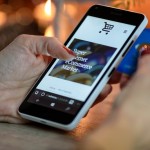Merchants wondering whether it’s worth it to invest in improving the consumer experience on their mobile Web sites or mobile-shopping apps may want to consider the findings of Worldpay Inc.’s “Mobile Payment Journey” survey. In the survey, released this week, 37% of U.S. consumers said they would spend more for products or services if the experience were better.
Among younger shoppers, those between 18 and 24 years old, that increases to 44%. That’s twice as many as those 65 and older, Worldpay says. The survey canvassed 16,000 smart-phone users in 10 global markets about their online-shopping habits.

Understanding how consumers shop using their mobile devices is important because retailers need to be where their shoppers are. For many consumers, mobile shopping means using an app. Sixty-eight percent of global shoppers said their last purchase was made using some app. Still, 32% of U.S. consumers tend to favor mobile Web browsers over an app.
Vital to mobile commerce, whether the consumer uses an app or a browser, are speed, convenience, and trust. Most consumers—77%—only download apps from brands and retailers they trust.
A majority of shoppers—59%—want to be reassured about retailers’ security efforts and expect to see digital security logos on the merchant’s home page in an app. Fifty-four percent expect them on an m-commerce site.
As for speed, and closely connected to convenience, 64% of global consumers want to save their personal data to make it easier to complete subsequent purchases, with 28% disclosing they don’t want to re-enter their details again. In another stat, 23% of them would not buy more than once from a retailer if there was no way to store payment details.
To access that data, 47% of global consumers want to use a biometric to make the payment quicker. In the United States, 46% are OK with that. Some other markets had much higher responses, with 63% in Brazil, 67% in China, and 66% in India.
Some merchants are adding biometric support to their apps to streamline log-ins. For example, convenience-store operator Cumberland Farms Inc. added a biometric log-in feature to its SmartPay app that works with iOS or Android smart phones that have a fingerprint sensor or facial-recognition technology, as with Apple Inc.’s iPhone X.





